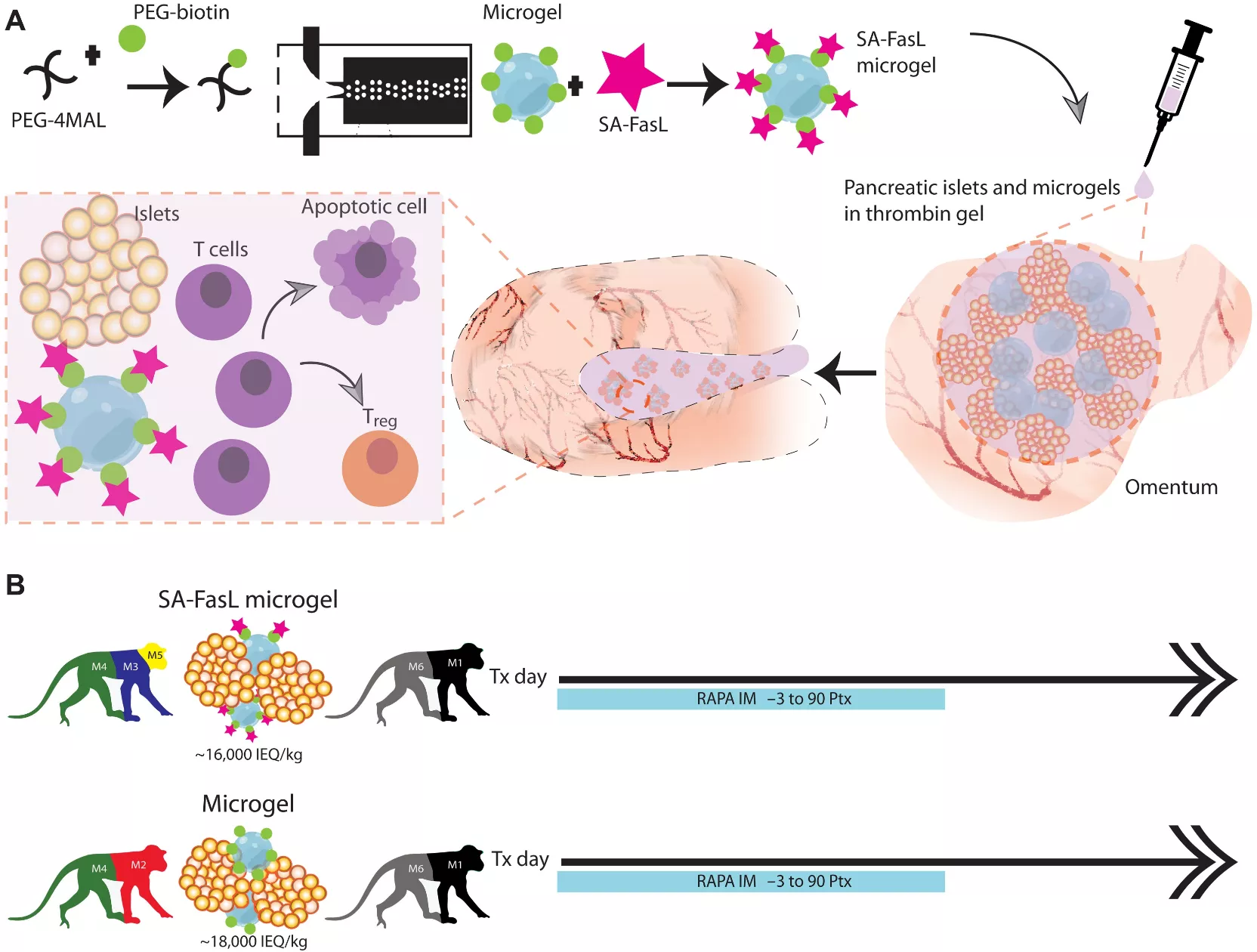Scientists hope that one of the ways to reduce the living burden of patients with type 1 diabetes is to transplant insulin producing cells, consolidate the supply of this important hormone and safely regulate blood glucose levels in the future. The rejection of these cells by the host's immune system is a serious stumbling block to this still experimental treatment, but the new bead like material brings new hope by neutralizing these attacks and denying the need for long-term immunosuppressive drugs with serious side effects.
The treatment explored in this study depends on the so-called in the transplanted pancreas β Cells, which are responsible for producing the insulin the body needs to keep blood sugar levels under control. In type 1 diabetes, these cells become the victims of autoimmune attack, which damages this important body function and leads to the need for regular insulin injections to control the disease.
Harvest from donated pancreas β Cells or stem cells engineered in the laboratory and then injected into patients is a very promising solution. However, a key stumbling block in this research field is the tendency of the patient's immune system to reject foreign cells, which means that so far, most of those who receive this experimental treatment have to take immunosuppressive drugs for life to suppress immune attacks.
These drugs can have serious side effects, including damage to the immune system, resulting in a higher chance of infection and cancer, as well as vomiting, nausea, kidney damage and high cholesterol. So think of a way to implant new drugs without immunosuppressive drugs β The cell population approach will mark a major breakthrough.
Earlier this year, a breakthrough in this field was to change the way they interact with the immune system by deploying new nanoparticles as carriers for drug delivery, so as to avoid serious side effects. Another common method is to β Cells are encapsulated in carefully designed materials to protect them from immune attacks without affecting their function.
This is what scientists at Massachusetts General Hospital, Harvard Medical School, Georgia Institute of technology and the University of Missouri are exploring. The team has developed a new biomaterial in the form of micro gel beads with a new protein named SA FasL on its surface, which can promote immune tolerance. This material is mixed with a group of pancreatic cells called islets - which contain important β Cells were transplanted into the omentum of adjacent tissues in the stomach of diabetes mice.
Within three months after transplantation, the mice were not treated with lifelong immunosuppressive drugs, but with a drug called rapamycin. The technology eventually proved to be very successful. The cells could survive and keep the mice under good blood glucose control for a long time.

"Our strategy of creating a privileged local immune environment allowed mice to survive without long-term immunosuppression and achieved strong blood glucose control in all diabetes non-human primates during the six-month study period. We believe that our approach enabled the grafts to survive and control diabetes for much longer than six months without the use of anti rejection drugs, because the transplanted tissues were surgically removed at the end of the study "All the animals quickly recovered to diabetes," said Ji Lei, the first author of the study.
Although the therapy has not yet been tested in humans, scientists describe the study as a highly relevant preclinical animal model and hope to use it as a springboard for human clinical trials. In addition to showing "great potential" for the treatment of type 1 diabetes, the team also pointed out that there were safety advantages over more common methods involving transplanting cells into the liver.
Lei pointed out: "unlike the liver, the omentum is a nonliving organ that can be removed in case of unwanted complications. Therefore, the omentum is a safer transplantation site for the treatment of diabetes, and may be particularly suitable for stem cell-derived β Cells and bioengineering cells. "